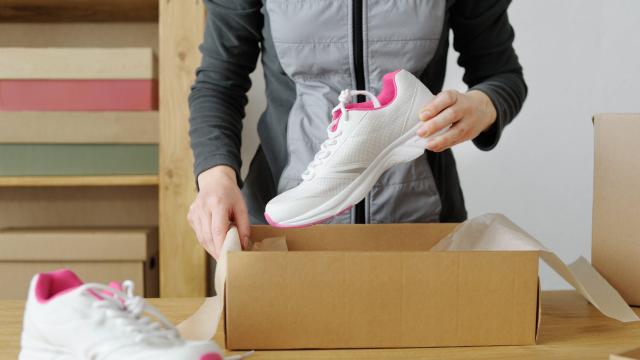You’ve probably heard that you should replace your running shoes when the cushioning wears down, which tends to be after 300 to 500 miles (500-800km) according to most manufacturers. But it turns out there’s another problem with old shoes, even if you haven’t been running in them.
The cushioning in running shoes isn’t made to last, even when those shoes are sitting on the shelf. Fleet Feet, a running shoe store, notes that the rubber and foam that form the shoes’ cushioning break down with age, and the foam can even splinter apart. Other components of the shoe, like the stitching on the upper, may break down over time, as well.
Fleet Feet sells shoes, so a cynical part of me is thinking that’s exactly what they’d want you to believe. Runners have differing opinions and experiences (here’s one forum post that includes a variety). Some report years-old shoes being good as new, while others have noticed enough of a difference that they refuse to buy old shoes.
Shoes vary, and people’s preference for cushioning also varies, so there’s not likely to be a one-size-fits-all answer. Even in the same model of shoe (Nike Free) I’ve had pairs that I wore happily for years and others that started to feel off-balance before their time. Ultimately you’ll have to decide for yourself how you feel about the issue.
How much time do you have before a running shoe starts to break down?
Shoes tend to be good as new for about a year after you buy them, Fleet Feet says, and after that they may begin to break down slightly. They won’t be completely ruined, but you might not get as many miles out of them as you would from a brand-new shoe.
Brooklyn Running Company called a bunch of shoe companies to get more information, and they found that most said their foams are good for about five years. That’s good news! But other components of the shoes, including the glues that hold them together, may break down sooner.
Storage conditions affect the lifespan of a shoe, the companies note, including temperature. A pair of shoes in cool dry place like the shelf in your closet will last longer than a pair that’s subject to heat and humidity and sunlight.
Bottom line, if you’re buying older models of shoes to save a few bucks, you may not be saving as much as you thought. If you got a pair for 40% off, but you only get 400 km out of it instead of 800, that’s the same price per km.

Leave a Reply
You must be logged in to post a comment.